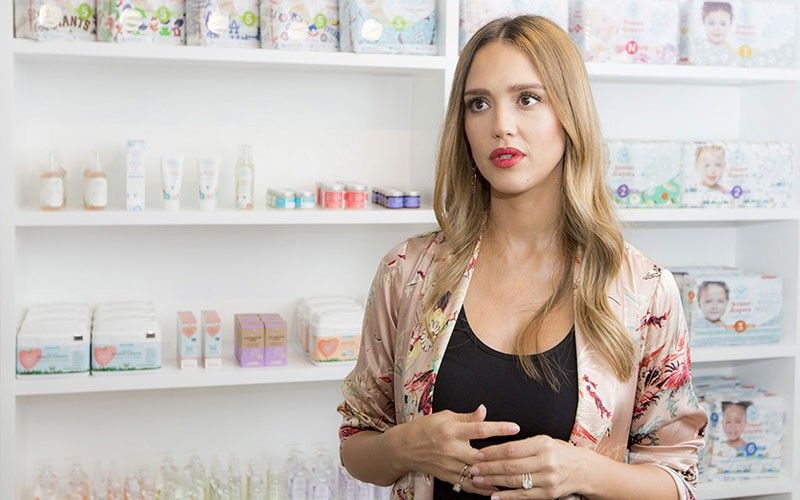Are century-old business giants the next Kodak?


Most with a grasp of business history know the rudiments of the Kodak story: a titan company, employing 160,000 people at its peak, and an integral part of the Dow Jones Industrial Average.
Kodak, as late as 1976, dominated the film and camera business, with a staggering 85-percent share of camera sales. They invented digital photography technology, even set up a separate division to drive it, but decided in the 1990s not to pursue it because there was no way to monetize it, and hoped it “went away.” In a nutshell, Kodak failed to change when the world changed around them.
In a strategic blunder of historic proportions, Kodak clung desperately to the film and photo-paper business model. By 2012 they declared bankruptcy, and what’s left is now a mere shell of its former self. How many people do you know who own a Kodak camera today? From 85-percent share to nothing in just three decades! It would be almost unfathomable if it weren’t fact.
The world changes, and the world is a harsh place with no mercy whatsoever. And nobody is immune from extinction. While Kodak is one of the more striking and visible stories, the data is daunting. As evidenced in the table below, over one-half of the S&P 500 has gone out of existence in just the last 15 years! The average lifespan of a leading company has dropped from around 90 years in the mid-1920s to 60 years in the mid-1950s to a mere 17 years today.
This set us thinking. Surely fast-moving consumer goods giants are not vulnerable to this disease? Or are they? Some soul searching and discussion, comparing notes across Nestlé, P&G, and other companies we are familiar with, suggest that nearly all companies, including the venerable fast-moving consumer goods (FMCG) titans, go through four stages in their evolution and development.
Stage 1: The innovators
All globally successful companies have their legends about the founders. Cadbury’s has legends about its founders who built communities. In 1867, Henri Nestlé saved the lives of babies around the world, in an environment where infant mortality in Switzerland was running at 16 percent. P&G invented Ivory Soap, the “soap that floats,” and created laundry detergent and disposable diaper categories.
Such maverick creator founders identify a genuine consumer need, often unexpressed, and then leverage the technology of the time to fill this need in a way that is a step-change improvement of legacy solutions to the problem. But is this the stuff only of legend? Are there still maverick creators out there with their finger on the pulse of today’s consumer?
The best way to answer this question is to tell the story of Jessica Alba. Yes, Jessica Alba!
Jessica Alba is a famous and beautiful movie star. But she is also a shrewd businesswoman who has taken advantage of the digital age we live in, and in doing so, showed P&G a thing or two about a worn-out mega-brand business model!
A few years ago, Alba took a break from acting to have children. She is a wellness-conscious consumer. She cares about what goes in her body, and on her body. She believes this matters. And if it matters for her personally, it certainly is going to matter for her baby!
Alba is not alone. Wellness is identified by Gallup as one of the single fastest-growing trends globally. This is not surprising. We are not getting healthier. Our waistlines are expanding. If you don’t have your health, you don’t have anything!
She searches for organic, natural, safe products for her baby, and she can’t find anything! Mass brands are made with chemicals — lots of them. And the market for wellness and people like Alba is just too small. So the diapers have chemicals in them. So do the shampoos, soaps and skin creams. The list goes on and on. Basically, if you really want natural, organic products, well, you can’t find it in the world of “mega-brands.”
So Jessica Alba starts up her own business called The Honest Company. She works with developers to make trustworthy products for her family. With online ordering growing by leaps and bounds, she doesn’t need Wal-Mart or Kroger’s anymore. She can go national with just a few mouse clicks. So she builds up a range of products that meet her standards, and knowing there are many people who feel just like her, she launches in 2012.
In year one she sold a quite superb $10 million. Within five years her sales had reached into the hundreds of millions and the company was valued at a whopping $1.7 billion! If P&G had created this there would be awards and speeches and lots of people getting promoted. But an actress with no traditional training in consumer goods does it from her kitchen table, and leverages e-commerce and niche positioning to win? Welcome to the new world, where authenticity, artisanal and “small” is valued more than size or industrial-scale expertise!
The world is moving away from industrial mega-brands. Fast. The main drivers are millennials. The consensus is, many millennials are immune to the promise of mega-brands. In some cases, they outright reject mega-brands. Rob Walker, the author of Buying In, has done extensive research among millennials and big brands. Here is one verbatim feedback that encapsulates the disconnect between mega-brands and millennials:
“As a millennial myself, big brands don’t do it for me. We’re a generation that needs constant stimulation, which can be seen in the diverse trends and niches today. That also means lots of niche brands. We also like things to be fast and are always searching for the new. Big brands have a big image, and they usually keep that image constant. So we get bored. I know I do. And we’re also more discerning then previous generations. Some people don’t like the way big brands do their business, so they chose to support local or smaller businesses. Or they may question their marketing tactics, like do they really believe in my well-being or are they just trying to make money off of me?”
Sounds like a perfect environment for a brand like The Honest Company to launch into. But every great company in essence had this Stage 1, once upon a time.
Stage 2: The rapid scaling up, rolling out worldwide, developing skills in distribution, manufacturing, supply chain, marketing and brand building.
As the new innovation grabs hold of public imagination and word-of-mouth, there is a need for the company to evolve to a new stage: rapid scaling up. Moving and deploying the new innovation globally gave most multinationals several decades of growth through the last century, especially in the post-war boom era. In simple terms, call it geographic expansion.
It takes a generation of investment to build a brand in a new market. A 20-year “plus” perspective, investing in brand building, trial efforts, till the kids of today grow up to start their own households. This requires patience, consistent investment in brand building, quality management, and marketing/sales disciplines — a behavior these giants exhibited till the 1980s, which meant they had strong market shares in the markets where they invested. Witness the decades-long, strong positions that Unilever had in India or Argentina, and Nestlé, Coke and P&G in the Philippines.
We have known several instances where the strong brands of today saw up to 20 years of sustained marketing investment before they broke even. This patience and willingness to invest set apart the multinationals in the scale-up phase. Often local competitors, even if they had access to the (by now, off-patent) technology, couldn’t compete because of high Capex and marketing investment barriers.
This started to change in the Eighties and Nineties, with the ASEAN Tigers, followed by China creating fast-growing markets, easy access to finance, and the emergence of strong local competitors, like Asia Pulp and Paper and the Wings group in Indonesia; Nirma in India; URC and Lucky Me in the Philippines; and many, many others. The competition for market share started. Margins were under pressure from competitors willing to accept lower returns.
Stage 3: The re-engineering of the value stream
As sales growth slows down, there’s only one way to satisfy continuous demands by investors and analysts for increasing EPS (earnings per share). As any year-one MBA student will tell you, there are only three ways to drive profits: price up; sell more; and reduce costs. There is no fourth way. Unable to price up in the face of competition, and facing slowing growth, well, this leaves only one option: strip out costs. Value stream engineering; massive rationalization exercises; shared service centers, often accompanied by cuts in marketing spends.
This coincides with two developments:
The appearance of nimble, low-cost competitors from emerging markets who appropriate the (by now) ubiquitous technology (past any patent protections) to eat into market shares of the leader. Sometimes, they also massively expand the consumer base by “localizing” and attracting a completely new consumer base (witness the phenomenal success of Patanjali in India; or URC’s C-2 Iced Teas in the Philippines).
The emergence of new, innovative competitors who start to create, occupy and grow niches the leader deemed too small or too unrealistic as a business: organic, natural, low ecological footprint, or socially responsible. These are often premium. (Witness Chobani, which rewrote America’s breakfast habit, attracting a new generation of consumers, and put Kellogg’s and General Mills under severe performance stress.)
Stage 4: The financial dance moves
As Stage 3 runs out of steam, with diminishing returns to squeezing the value chain, companies then turn to financial “dancing” and maneuvering as the solution to improving EPS. The conversation is dominated by questions like “How can we move revenue recognition to lower-tax jurisdictions?” or “Can we sell off this bit and buy that bit?” (Managers know M&A transactions are not scrutinized externally with the same lens as operational investments in capital or marketing budgets. Not for a few years after the event, anyway!)
It’s a distraction of sorts. The focus becomes all about “constructing a story for the analysts.” And when a company reaches this point, well, they are in bad shape. This is the last card they have to play.
(To be continued)
* * *
Nandu Nandkishore, a Nestlé veteran of over 26 years who was CEO for Nestlé Indonesia, Philippines, and global CEO of Nestlé Nutrition, retired in 2015 and is now a faculty member at London Business School, consultant, VC, and business guru.



















